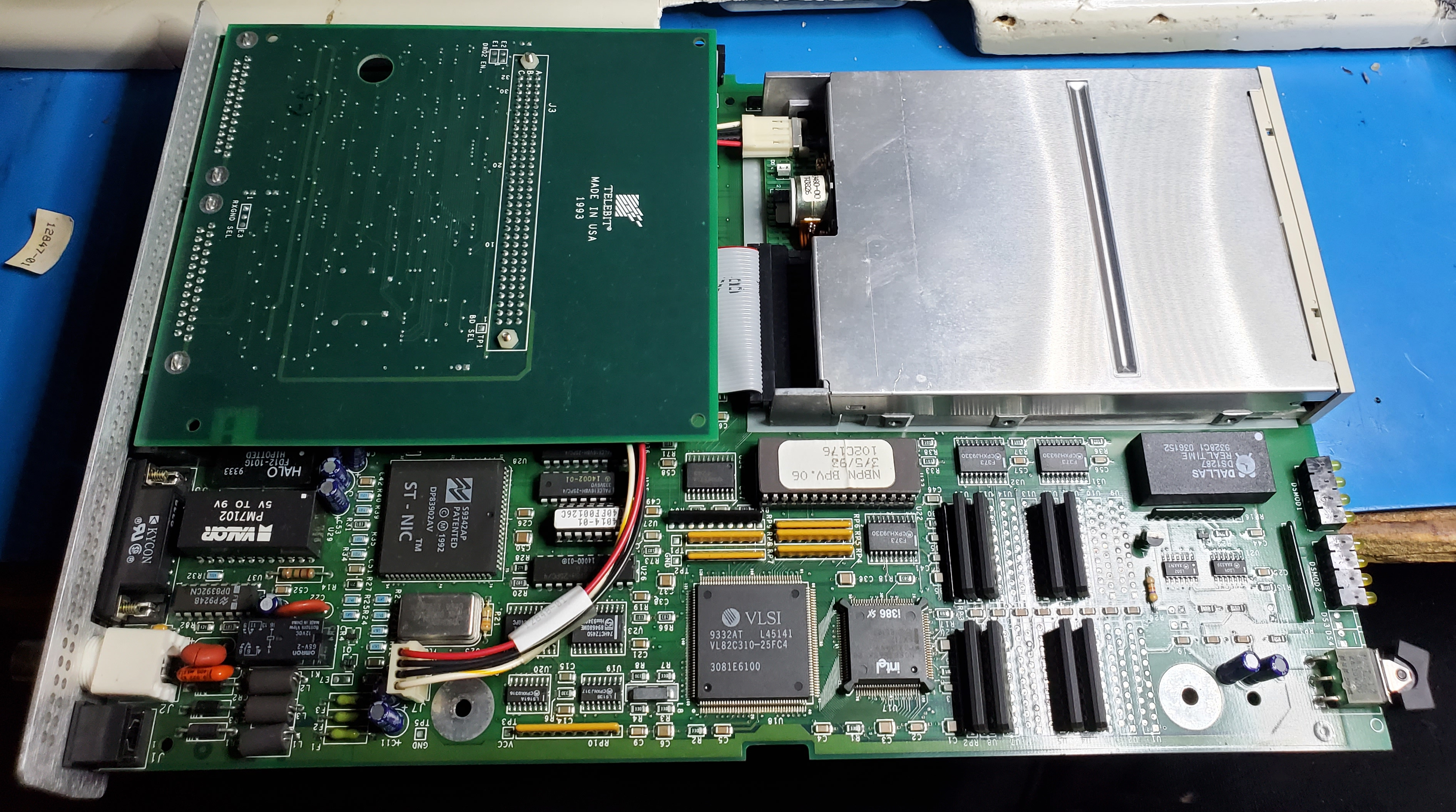
1. Introduction
The Telebit NetBlazer PN2 (circa 1993) is a router/RAS device designed to connect remote sites by dialing them up with an attached modem. It comes with a rudementary OS that acts a little like UNIX and has limited support for loadable modules.
Two striking features of the NetBlazer PN2 are its ability to boot from a built-in floppy drive, and its 386 CPU. While the CPU is a 386, the architecture is apparently incompatible with that of the IBM PC.

It also includes a built-in Ethernet RJ-45/BNC/AUI port and two serial ports for connecting modems or direct RS-232 serial connections.

2. Boot Disk
Fortunately, our NetBlazer PN2 came with a working boot diskette. We have made it available at The Internet Archive. It has a configuration on it which is invalid by now, but provides a starting point to get to a working configuration.
3. Commands
This section is under construction!
Please stay tuned for updates pending research and development.
A shell is available via serial port or telnet. Typing "?" in this shell provides a list of available commands. Specific procedures for setting up connections are still under research. Hopefully, we will have some more useful information here at some point.
4. Executable Format
This section is under construction!
Please stay tuned for updates pending research and development.
The executable format is still under research. Hopefully, we will have some useful information here at some point.
The boot disk contains TELEBIT.SYS, which seems to be a COM executable (single segment of executable code). A strings dump includes references to Protected Mode and a "FRED loader." There is also a giant binary blob named FRED, which may be related to this.